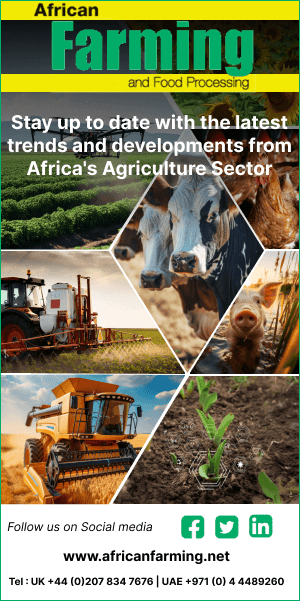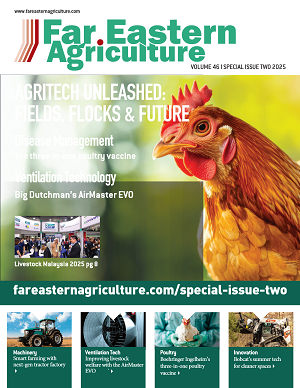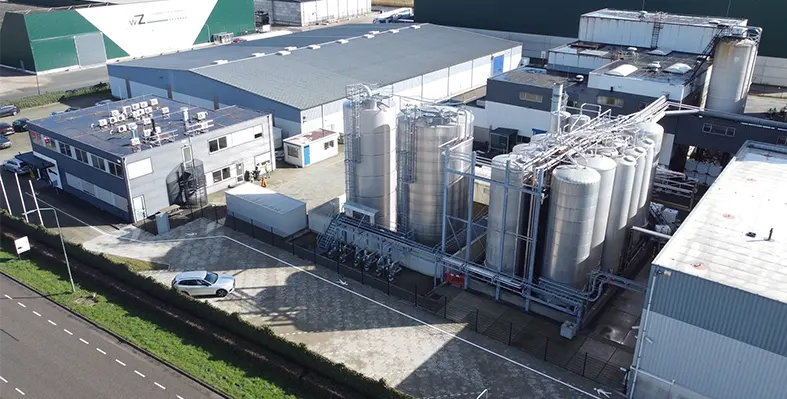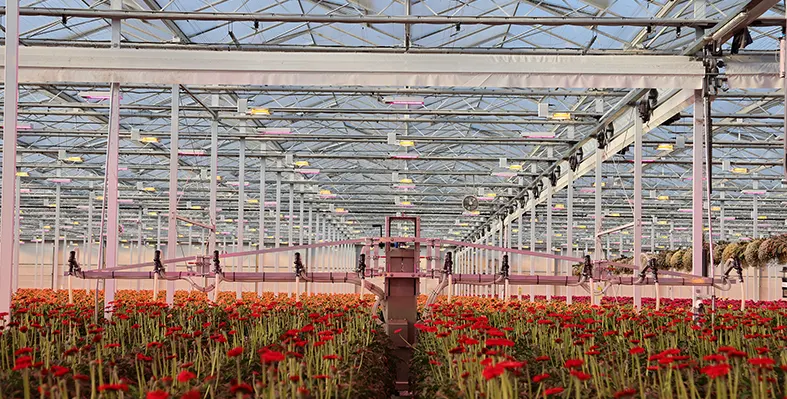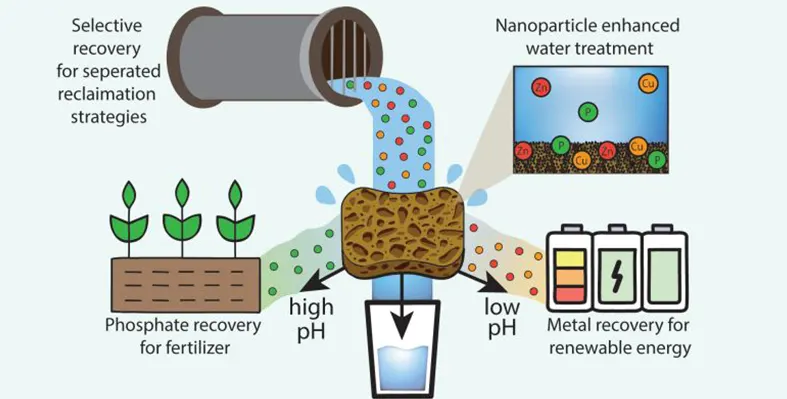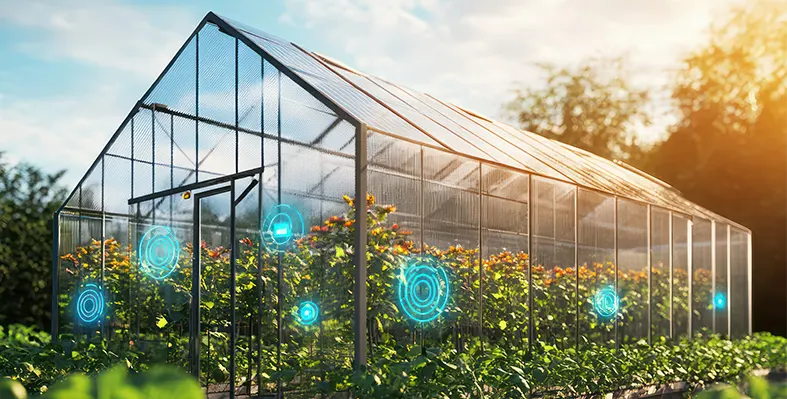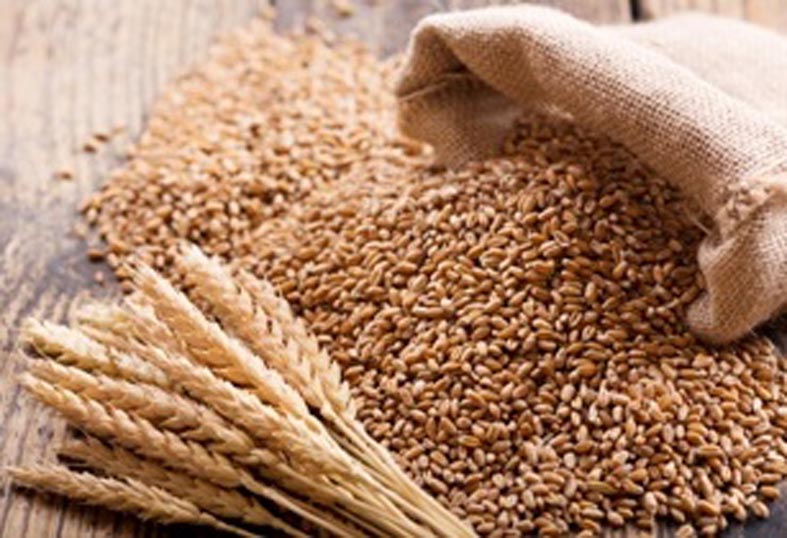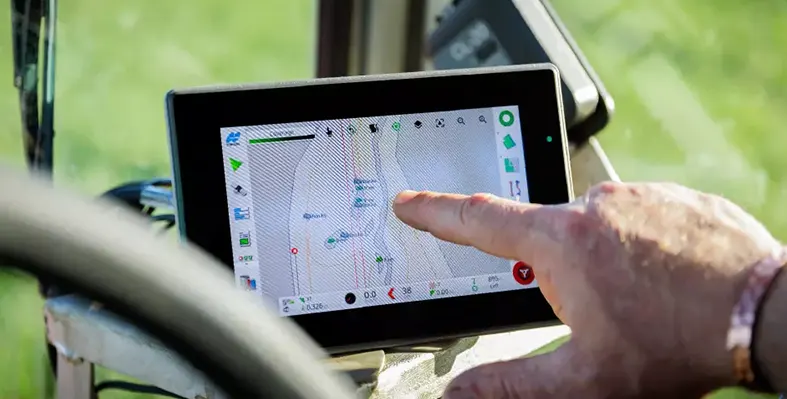In The Spotlight
Revolutionising feed supply: the power of AI and BinSentry
BinSentry, a Canadian agtech company transforming animal feed logistics through advanced sensor technology, has announced a US$50mn Series C funding round led by Lead Edge Capital.
This investment supports BinSentry’s continued global expansion as the agriculture sector shifts towards AI, automation, and data-driven decision-making.
The company develops AI-powered, solar-operated sensors paired with a proprietary software platform that enables real-time feed inventory monitoring with 99% accuracy. Designed to replace manual feed checks, these self-cleaning sensors give animal agriculture companies reliable visibility into on-farm feed levels—helping to prevent outages, eliminate waste, and streamline operations.
BinSentry’s platform also features a mobile dashboard that enables better forecasting and planning for feed mills and livestock producers. The company currently supports industry leaders across North America and Brazil, including Cargill, Hanor, and Wayne-Sanderson Farms, and monitors over 40,000 bins.
Aaron Darr, principal at Lead Edge Capital said,“We’ve been closely monitoring parts of the agriculture supply chain that have historically been underserved by software in anticipation of large agricultural companies needing better tools for cost savings, forecasting, and operational efficiency. BinSentry is exactly the kind of company we look for: a proven business with real customer traction using AI, real-time data, and automation to solve critical problems. As the agtech sector matures, companies like BinSentry with strong fundamentals and clear ROI are best positioned to lead the next wave of innovation.”
Earlier this year, BinSentry and Cargill formalised a partnership making Cargill the exclusive distributor of BinSentry’s feed inventory platform in Brazil. The company reports strong performance, doubling growth year-over-year while maintaining a 0% churn rate—an indicator of both customer satisfaction and product reliability.
By improving supply chain visibility, BinSentry helps agricultural firms tackle issues such as inaccurate data, misaligned budgets, transportation inefficiencies, and poor feed conversion ratios. Its insights allow users to make faster, better-informed decisions that improve profitability.
Ben Allen, CEO of BinSentry said,“At BinSentry, our mission is to bring innovation, precision and visibility to one of agriculture’s most overlooked but critical challenges: feed logistics. “Our best-in-class sensors ensure large agricultural companies, feed mills, and their customers get the right feed at the right time, every time. With the support of our investors, we’re continuing to expand globally and offering our customers flexible options like a lifetime product warranty and no upfront costs. We’re proud to partner with Lead Edge Capital as we continue helping some of the largest agricultural companies in the world operate more efficiently, safely, and profitably.”
To further strengthen its leadership, Paul Bell—former Dell executive and experienced global operator—will join BinSentry’s Board of Directors.
With agtech investments on the rise, particularly in biotech and precision technologies, BinSentry’s momentum reflects broader trends driving growth in the global agricultural innovation space.
Smart farming: drone tech is empowering Vietnam’s young farmers
In Vietnam’s rural heartlands, a new generation of farmers is transforming agriculture through technology.
At the centre of this shift is the use of agricultural drones from XAG, helping farmers save time, reduce labour, and improve crop yields—while offering young people a meaningful reason to return to their hometowns.
One such farmer is 30-year-old Lưu Văn Đoàn. After years of working far from home in a factory, Đoàn returned to Tiền Giang province and discovered drone technology through his brother. "I used to work at a factory far from home, barely earning enough and missing my family," he recalls. "I found my passion for technology. Soon I was piloting drones every day." Today, Đoàn earns his living offering drone-based crop protection services to fellow farmers—covering his own rice paddies and those in nearby communities.
His journey reflects a growing solution to Vietnam’s agricultural labour crisis. As rural areas age—home to nearly eight million elderly people—and younger generations migrate to urban jobs, many farms are left without support. Đoàn understands why. Traditional farming is physically demanding, especially when spraying crops manually. “Carrying heavy equipment under the hot sun, chemicals burning your skin—sometimes the fields were almost impossible to cross,” he remembers. Now, with a smartphone and the XAG P150 drone, he completes work faster and more safely. “It’s much easier,” he adds.
The XAG P150 has revolutionised Đoàn’s work. With a 70kg payload, precise RTK route planning, and consistent spraying capability, the drone ensures full coverage across different field shapes. "When spraying herbicides by hand, weeds sometimes persist," Đoàn says. "With drones, fields are often completely weed-free."
At first, farmers were sceptical. "The spray uses too little water—how will the rice grow?" they asked. But as they saw the results—healthier crops and fewer weeds—their views changed. The drone's powerful downdraft ensures pesticides reach both sides of the leaves, delivering better results. “You can clearly see that drone spraying makes the rice look healthier,” says Đoàn.
The benefits aren’t just visual. Farmers using Đoàn’s drone services cut pesticide use by 30%, making the service cost-effective. "The savings on pesticides cover what farmers pay for the drone service!" he explains. This aligns with findings from Vietnam’s Institute of Agricultural Economics, which report drones can reduce pesticide use by 30% and increase yields by 15%.
Precision is especially vital in Vietnam’s fruit export market, where residue limits are strict. Drones allow for careful mapping, accurate dosing, and even application, helping farmers meet global standards for crops like durian and jackfruit.
For Đoàn, drone farming has brought both a career and a sense of purpose. "Drones have made a huge difference for us," he says. "As things develop, I hope to expand, add more drones, and help more farmers succeed."
Vietnam’s next generation of farmers isn’t just returning to their roots—they’re reimagining them, one drone flight at a time.
WVPAC Congress Malaysia 2025: a step towards sustainable poultry
The 23rd World Veterinary Poultry Association (WVPA) Congress is set to take flight in Kuching, Sarawak, Malaysia, from 6–10 October 2025, bringing together a dynamic global community focused on one critical mission: building a healthier world through sustainable poultry practices.
With the theme “Sustainable Healthy Poultry For A Healthier World,” the congress promises to be more than just a gathering—it's a timely response to mounting global concerns around food safety, food security, and the increasing need for innovation in animal health. This international event is expected to draw over 2,000 delegates including veterinarians, researchers, pathologists, consultants, and industry trailblazers, all converging to share insights, challenge norms, and ignite change.
Hosted by WVPA Malaysia, with academic support from Universiti Putra Malaysia and the Institute of Bioscience, the congress will spotlight critical topics such as disease prevention, biosecurity strategies, and the ever-growing role of technology in sustainable poultry farming. It also opens a global stage for collaboration between researchers and producers, with the aim of securing the future of poultry health without compromising environmental and public health goals.
Registration is now open, and with a call for abstracts already underway, scientists and thought leaders are encouraged to contribute to the conversation. The event also invites industry participation through exhibition and sponsorship opportunities, offering brands a powerful platform to showcase innovation and engage directly with decision-makers.
A highlight of the congress will be the prestigious Bart Rispens Research Award, sponsored by MSD Animal Health, recognising groundbreaking work that has advanced poultry science in significant ways.
As the poultry industry navigates climate challenges, shifting consumer expectations, and the threat of emerging diseases, Kuching 2025 offers a rare opportunity to shape the future through collaboration, science, and sustainability. For anyone invested in the future of food and farming, this is one congress that promises to be as impactful as it is essential.

As per the reports, 98.5 percent of cropland across the territory is now either damaged or inaccessible.
Satellite assessment reveals Gaza cropland collapse as famine deepens
A new satellite-based analysis by the Food and Agriculture Organization of the United Nations (FAO) and the United Nations Satellite Centre (UNOSAT) has revealed an alarming collapse of agricultural capacity in the Gaza Strip.
According to the report, 98.5 percent of cropland across the territory is now either damaged, inaccessible, or both—leaving just 1.5 percent, or 232 hectares, available for cultivation. This marks a drastic drop from April 2025, when 4.6 percent of land (688 hectares) was cultivable.
With Gaza’s population exceeding two million, the sharp decline in cropland availability presents a dire picture of food insecurity. Satellite data also shows that 12.4 percent of farmland, though physically intact, cannot be accessed due to restrictions and designated “no-go” zones, limiting the ability of farmers to restart local food production.
This dramatic reduction is not just the result of conflict-related destruction, but also the wider collapse of essential farming infrastructure. Irrigation systems, farm equipment, roads, storage facilities, and market access have been either destroyed or rendered non-operational. The ongoing conflict, coupled with severe restrictions on humanitarian aid and movement, has made conditions nearly impossible for any form of agricultural recovery without urgent external intervention.
Rein Paulsen, director of FAO's emergencies and resilience said,“To prevent further suffering, we need to prioritize urgent humanitarian access and invest in restoring Gaza’s local agrifood production systems, markets, and infrastructure. This includes both regaining safe access to farmland and rehabilitating land and assets damaged by the conflict.”
This assessment follows the recent alert from the Integrated Food Security Phase Classification (IPC), issued on July 29, warning that the worst-case famine scenario is currently underway in Gaza. The situation is deteriorating rapidly. Data shows that 39 percent of the population are now going days without any food, while over 500,000 people – nearly a quarter of Gaza's residents – are facing famine-like conditions. The remainder of the population is also experiencing acute food insecurity, with many at emergency levels of hunger.
In light of the worsening crisis, FAO, WFP, and UNICEF are calling for an immediate and sustained ceasefire to halt the violence, enable the safe release of hostages, and allow life-saving humanitarian aid to reach all areas of Gaza. They stress the need for unhindered access through all available crossings, the revival of commercial supply chains to restock local markets, and the urgent protection of civilians and aid workers. Rebuilding health, water, and sewage infrastructure is also critical. Long-term stability will rely on investment in local food systems, revitalising bakeries, markets, and farming activities to support Gaza’s recovery.
Automation and sustainability fuel poultry machinery market surge
The global poultry keeping machinery market is forecast to grow steadily, with projections indicating a rise from US$5.6bn in 2025 to US& 8.1bn by 2035.
This expansion, supported by a 3.8% CAGR, is being driven by rising demand for poultry products worldwide, growing adoption of automation, and a strong focus on sustainable and efficient farm management.
The poultry sector is evolving fast, with technology playing a pivotal role in modernising how farms operate. Automation is becoming the standard across poultry operations, making labour-intensive tasks like feeding, watering, egg collection, and waste disposal more streamlined. Integration of IoT and AI tools is allowing farmers to monitor bird health, feed levels, and environmental conditions in real time.
According to a leading industry analyst, “The poultry sector is undergoing a profound transformation, moving rapidly towards sophisticated automation to enhance efficiency, ensure biosecurity, and meet the soaring global demand for protein. This growth is not just about quantity; it’s about quality, sustainability, and intelligent farm management.”
This market growth is further supported by increasing poultry consumption, particularly in urban areas where protein-rich diets are in higher demand. Governments are also backing the shift towards more secure and modern farming practices, offering support for the adoption of biosecure housing and automated disinfection systems.
Sustainability is another key area shaping the market. With climate pressures and environmental regulations on the rise, poultry farms are turning to energy-efficient technologies such as solar-powered systems, intelligent ventilation, and waste-to-energy innovations to reduce their environmental footprint.
Feeding and climate control technologies are emerging as the most significant segments within the poultry machinery market. Automated feeding systems help deliver balanced nutrition while cutting down on manual labour and feed waste. With fluctuating feed prices, these systems are crucial for improving feed conversion ratios and optimising bird growth. Climate control systems, meanwhile, ensure healthy farm conditions by regulating temperature, humidity, and airflow, helping to prevent heat stress and disease outbreaks.
The largest demand continues to come from poultry farms and processing factories. Modern farms are investing in smarter, tech-driven solutions to improve productivity and animal welfare, while large factories are implementing fully automated lines to handle growing demand for processed poultry products.
Regional trends show the Asia-Pacific market leading growth, with countries like China, India, and those in Southeast Asia heavily investing in farm upgrades. North America maintains a strong market share due to industrial-scale production and smart farm adoption, while Europe’s growth is being driven by strict animal welfare laws and sustainable farming initiatives.
While high initial investment costs and biosecurity threats remain challenges, the opportunities far outweigh the risks. Smart automation, renewable energy integration, and AI-powered analytics are reshaping the future of poultry farming, ensuring it becomes more productive, secure, and environmentally responsible.
Smart farming: drone tech is empowering Vietnam’s young farmers
In Vietnam’s rural heartlands, a new generation of farmers is transforming agriculture through technology.
At the centre of this shift is the use of agricultural drones from XAG, helping farmers save time, reduce labour, and improve crop yields—while offering young people a meaningful reason to return to their hometowns.
One such farmer is 30-year-old Lưu Văn Đoàn. After years of working far from home in a factory, Đoàn returned to Tiền Giang province and discovered drone technology through his brother. "I used to work at a factory far from home, barely earning enough and missing my family," he recalls. "I found my passion for technology. Soon I was piloting drones every day." Today, Đoàn earns his living offering drone-based crop protection services to fellow farmers—covering his own rice paddies and those in nearby communities.
His journey reflects a growing solution to Vietnam’s agricultural labour crisis. As rural areas age—home to nearly eight million elderly people—and younger generations migrate to urban jobs, many farms are left without support. Đoàn understands why. Traditional farming is physically demanding, especially when spraying crops manually. “Carrying heavy equipment under the hot sun, chemicals burning your skin—sometimes the fields were almost impossible to cross,” he remembers. Now, with a smartphone and the XAG P150 drone, he completes work faster and more safely. “It’s much easier,” he adds.
The XAG P150 has revolutionised Đoàn’s work. With a 70kg payload, precise RTK route planning, and consistent spraying capability, the drone ensures full coverage across different field shapes. "When spraying herbicides by hand, weeds sometimes persist," Đoàn says. "With drones, fields are often completely weed-free."
At first, farmers were sceptical. "The spray uses too little water—how will the rice grow?" they asked. But as they saw the results—healthier crops and fewer weeds—their views changed. The drone's powerful downdraft ensures pesticides reach both sides of the leaves, delivering better results. “You can clearly see that drone spraying makes the rice look healthier,” says Đoàn.
The benefits aren’t just visual. Farmers using Đoàn’s drone services cut pesticide use by 30%, making the service cost-effective. "The savings on pesticides cover what farmers pay for the drone service!" he explains. This aligns with findings from Vietnam’s Institute of Agricultural Economics, which report drones can reduce pesticide use by 30% and increase yields by 15%.
Precision is especially vital in Vietnam’s fruit export market, where residue limits are strict. Drones allow for careful mapping, accurate dosing, and even application, helping farmers meet global standards for crops like durian and jackfruit.
For Đoàn, drone farming has brought both a career and a sense of purpose. "Drones have made a huge difference for us," he says. "As things develop, I hope to expand, add more drones, and help more farmers succeed."
Vietnam’s next generation of farmers isn’t just returning to their roots—they’re reimagining them, one drone flight at a time.
From streets to fields: Unitree’s Go2 joins smart farming
Unitree Robotics, known for creating user-friendly and affordable robots, is now bringing its technology to farming.
As rural areas face a shortage of younger workers and an ageing labour force, many tech companies are turning to robotics and digital solutions to modernise agriculture. In line with this, Unitree has teamed up with a top agricultural research institution to explore how robots can support smarter, more efficient farming practices.
Traditionally, farmers have relied on their experience to judge the health and condition of crops. But modern robotics, powered by AI vision and edge computing, can now carry out these tasks more accurately and efficiently. These technologies also make farming more accessible for younger generations, who can become "robot managers" and take on farming roles without needing years of experience.
Unitree’s consumer-grade quadruped robot, Go2, is leading this change. Priced from just US$1,600, Go2 is affordable and well-suited to agriculture, thanks to its strong performance, adaptability, and ability to work in tough conditions. Farming environments pose unique challenges, such as varying lighting and ever-changing crop shapes, which demand advanced sensing and recognition abilities.
To meet these needs, Go2 has been equipped with a specialised camera and agricultural sensors that track the growth of seedlings in real time. It uses a custom AI vision model tailored for farming. This AI, supported by edge computing, allows the robot to analyse and identify plant conditions on the spot. The data collected is then sent to a central system, which uses agricultural big data to suggest specific farming strategies based on the crop’s growth stage.
This integrated setup, from the robot in the field to the cloud-based platform, helps reduce the physical burden on farmers. At the same time, it offers researchers detailed and frequent field data, helping to speed up scientific progress in agriculture.
As one industry observer noted, “civilian-grade robots, through deeper integration into agricultural environments, are opening up broader application prospects for advanced legged robotics.”
Unitree continues to develop high-quality legged and humanoid robots for the public. With practical tools like Go2, the company is helping to replace hard, repetitive, and risky work with smart automation-making farming more efficient and improving the overall quality of life.









